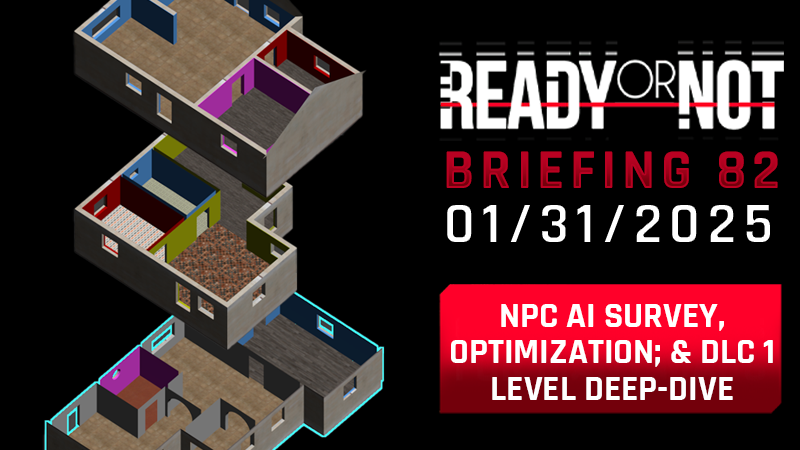Welcome to the 82nd installment of our Ready or Not Development Brief, dated January 31st, 2025.
Kickstarting the new year, our first development briefing focuses on unveiling the latest NPC AI sentiment survey, detailing a fresh approach to optimization, and delving deeply into our process for crafting RoN levels, using examples from the Home Invasion DLC.
After a refreshing winter break, we are regrouping and refocusing our efforts on the ongoing development of Ready or Not. Currently, we are wrapping up an intense period of detailed planning and prototyping.
This breakdown of our level design process is a glimpse into the substantial work that underpins each content release for Ready or Not. It coincides with the upcoming closure of our community mapping contest—more details on our official Discord!
Excitingly, many in our community will be pleased to hear that several forthcoming, yet-to-be-revealed levels we are working on will be more intimate in scale. This aims to complement the expansive nature of our recent larger levels, such as Leviathan and 3-Letter Triad.
Note: These development briefings aim to keep you informed about our ongoing support for Ready or Not, but do not cover every project currently in the works. Please remember that the content discussed here may still be in development and subject to modification.
We’re thrilled to announce that our NPC AI sentiment survey was launched just yesterday! You can participate by filling it out here:
https://forms.gle/DsVQT2x76qEpvWvj8
We’re delighted by the overwhelming response we’ve received so far, and we’d value your input greatly—every piece of feedback is crucial in helping us understand your experiences!
If you’re uncertain how to answer a particular question, it may not be mandatory, and you can skip it! If you encounter a required question without an answer, feel free to provide an explanation in the written response sections.
One of our perpetual goals is refining the SWAT, Suspect, and Civilian AI. This survey will help us gather precise data on the current AI state following the release of Dark Waters, which involved improvements and fixes we wish to evaluate further to ensure no unintended issues have arisen.
The survey focuses on dissecting AI functions that impact perceived difficulty levels, alongside behaviors that might cause frustration or satisfaction. Although feedback from our social platforms and official Discord is beneficial, this survey allows us to gather detailed AI-specific insights all in one place.
We are now integrating “Unreal Insights” into our comprehensive performance optimization strategies, aimed at ensuring the game runs seamlessly. This system highlights the performance metrics of particular game events and processes, allowing us to identify specific issues more efficiently.
By incorporating this tool into our workflow, we’ve already observed significant performance improvements, and as our technical artists and engineers continue its implementation, we anticipate even more substantial benefits.
[Image below: General example of the Unreal Insights task graph analysis view-port, from the UE5 Developer Page]
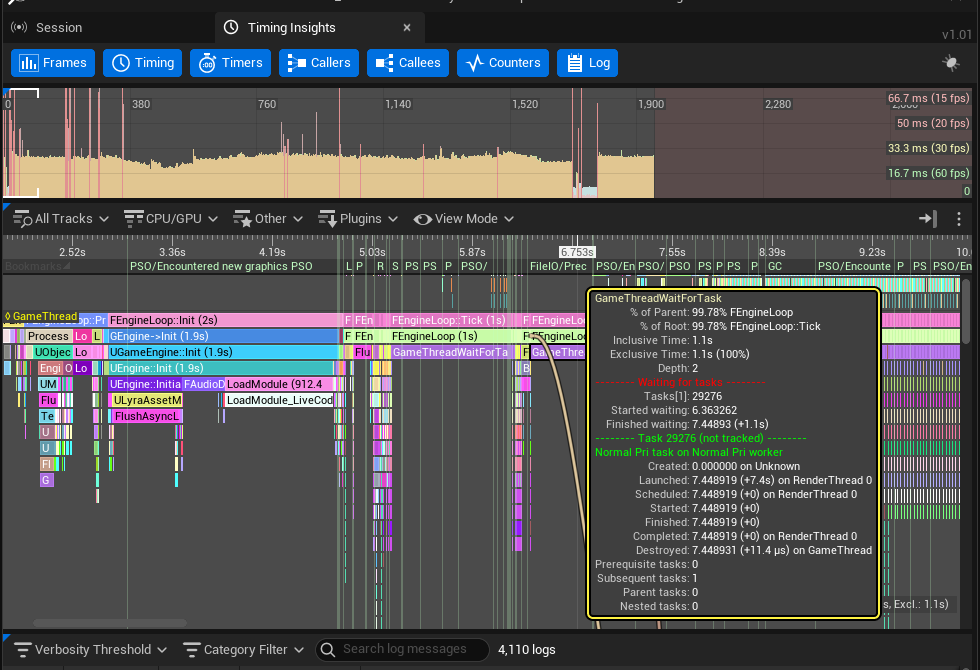
The remarkable members of our level design team (special thanks to Tisa!) have documented their efforts in crafting levels for Ready or Not, particularly focusing on DLC 1.
This documentation reveals our design philosophies and methods for creating levels generally, featuring exclusive behind-the-scenes photos of Narcos development and a comprehensive example of Lawmaker from DLC 1.
Every Ready or Not level undergoes a multi-step process, from ideation to final polish.
[Image below: The levels discussed (Narcos and Lawmaker) are influenced by feedback gathered through our Home Invasion map poll]
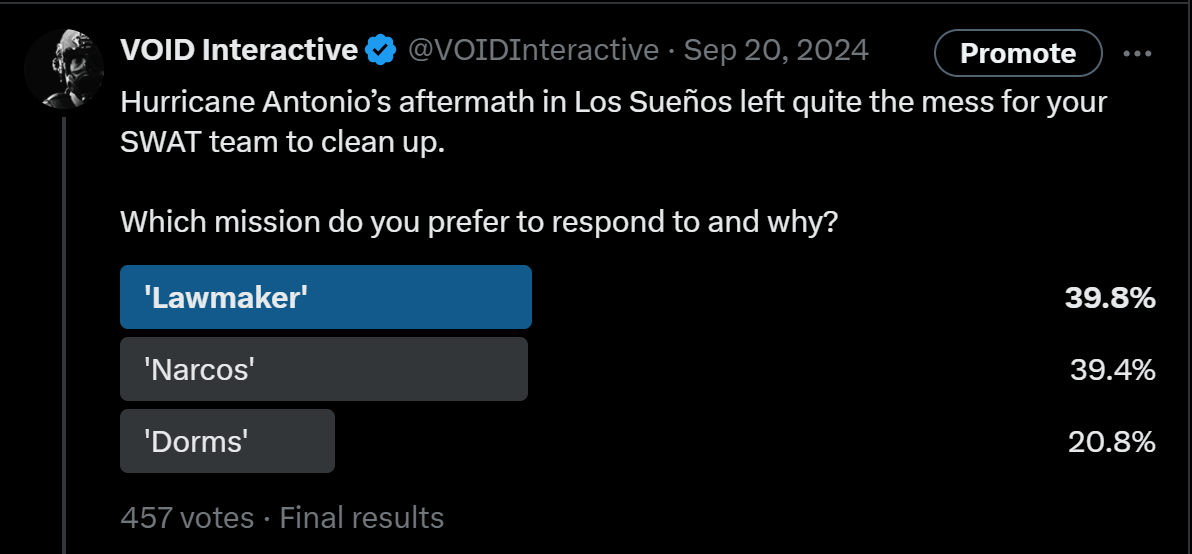
Stage 1 (Planning)
The journey begins with either initiating new production or deciding on the level to create. At VOID, every member has the opportunity to propose an exciting level concept, inspired by community feedback.
Participants document their ideas in a Game Design Document (GDD), which are then reviewed based on the DLC’s target theme and the innovation and fun they promise. Selected concepts progress as levels to be developed.
Our narrative designers and concept artists start sketching various ideas, while the lead level designer crafts a Design Brief distributed to individual designers to commence the prototype phase.
[Image below: A sketch of the layout of Narcos, including doorways and key elements]

Stage 2 (Prototype)
The level design process moves into the initial ‘prototype phase.’ We rapidly create variations of the level to identify enjoyable elements and determine the best approach for the alpha version. Given Ready or Not’s realistic and weighty themes, we base our levels on real-world references.
Extensive research and site visits ensure our architecture respects the intended area’s characteristics. If a level proves unpromising, it may be discarded—this deliberate prototyping stage allows such flexibility, akin to an artist sketching rough drafts.
[Image below: Layout of Narcos based on research into similar neighborhood development, resembling a GPS view]
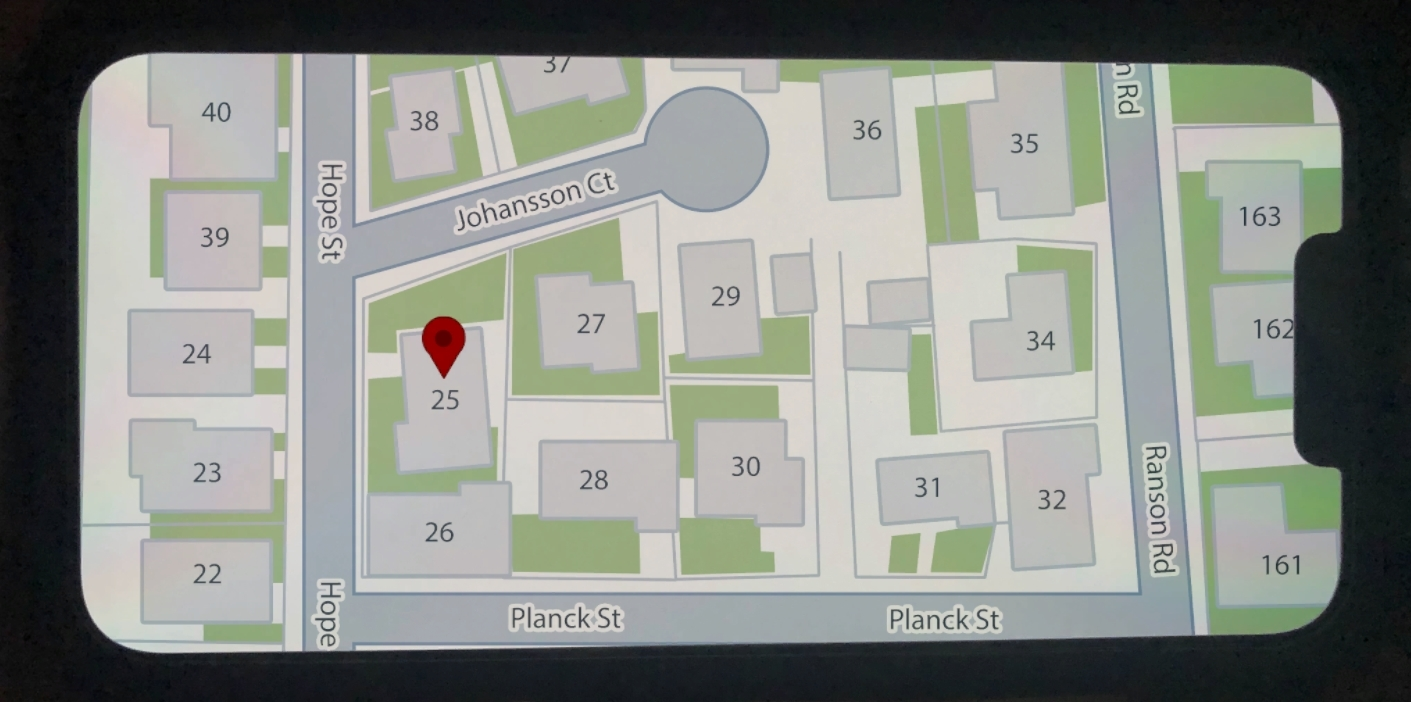
Once a designer finalizes their proposal, the lead designer reviews each prototype to determine which moves on to the alpha phase. Often, valuable elements from multiple prototypes merge to form the most robust version.
Stage 3 (Alpha)
Having chosen the optimal prototype, we dive further into detailing the blockouts, adding navigation, doors, AI, cover, and ensuring level playability. Once the level reaches a substantial form, our combat designer refines AI behavior to achieve ideal combat interactions, followed by internal QA testing to resolve significant issues at this stage.
[Image below: Blockout version of Narcos]
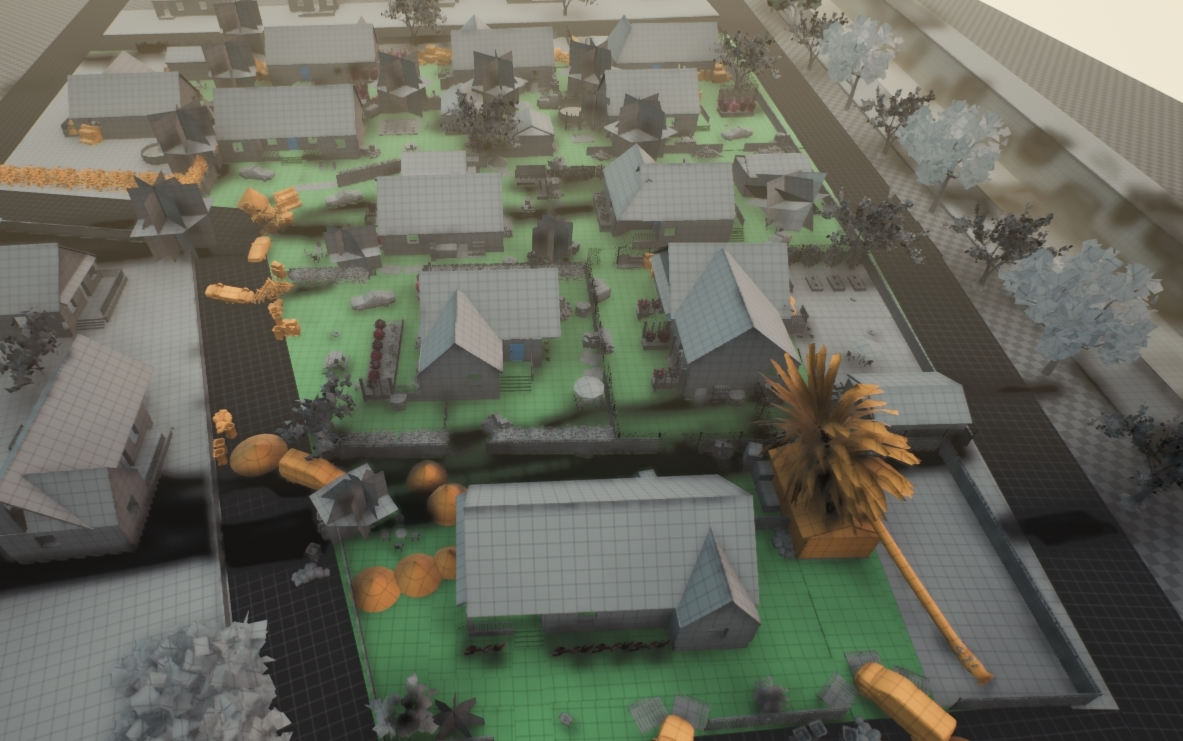
With a strong alpha candidate developed, each designer creates a comprehensive level handover document, providing all vital information, screenshots, references, and rationale. The document and the level then advance to the assigned environment artist. Concurrently, other teams commence work, including audio teams recording required voicelines and the character art team crafting NPCs.
Throughout this process, designers maintain close collaboration with all teams involved, ensuring the original design intent remains intact during cross-department developments.
Stage 4 (Beta)
Upon completing the environmental pass, designers return for multiple level revisions:
- Collision pass – Establishing blocking volumes prevents players/AI from accessing non-playable areas, thus optimizing movement.
- Visibility pass – Inserting visibility blockers in geometry cracks stops unfair AI shots on players.
- Navigation pass – Polishing navigation ensures no movement occurs in non-playable spaces, vital for optimization and avoiding AI bugs.
- Door pass – Verifying all doors and their functionalities, ensuring optimal interaction for both player and SWAT AI.
- Cover pass – Ensuring all cover points are generated and strategically positioned for AI utilization.
- Interactable pass – Confirming custom logic implementation and functionality.
[Image below: Blockout of interactables related to the Informant on Narcos]
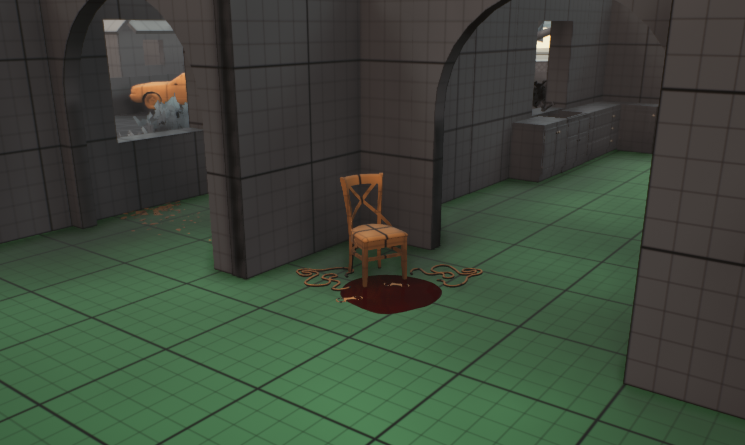
[Image below: Red blockout triangles in Narcos signify sightlines from one doorway to another, ensuring player safety across doorways]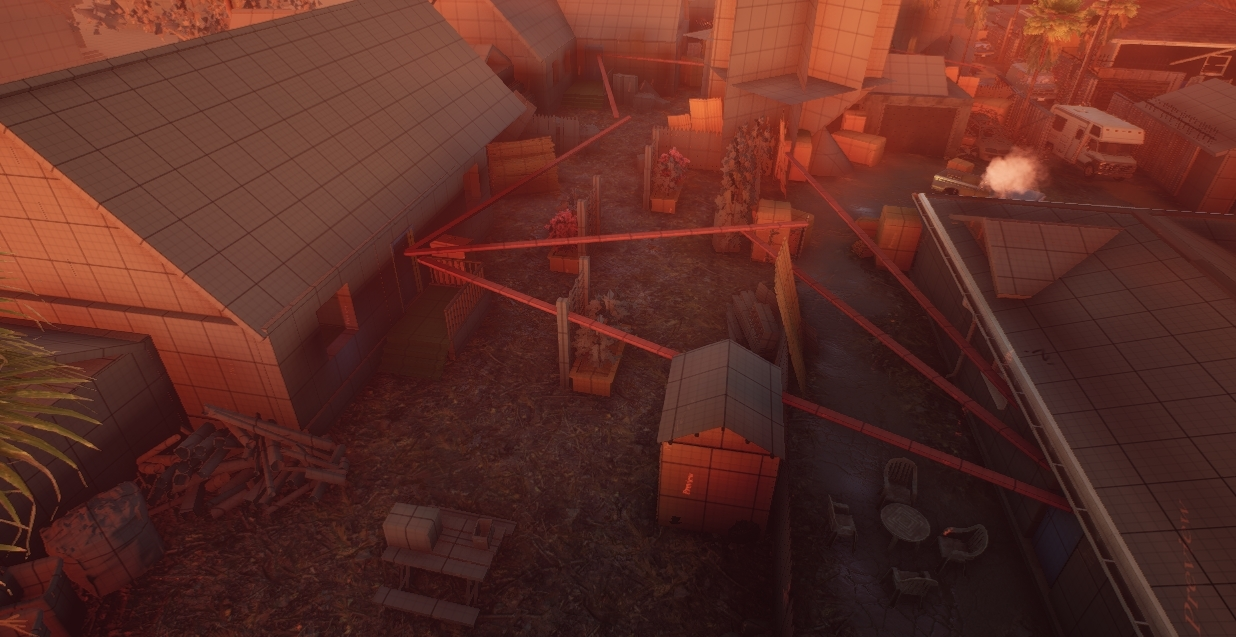
Stage 5 (Content Complete)
In this final stage, designers collaborate with other teams to confirm all level features are seamlessly implemented and functioning as intended, while ongoing QA testing guarantees readiness for public release.
Lawmaker Layout
The vision for Lawmaker was to create a mansion with grand rooms and expansive corridors.
Mansions often boast distinctive layouts with unique corners absent in ordinary homes—a feature we found intriguing and less common in Ready or Not.
Despite the unusual angles, mansions maintain structural accuracy, with top-down views typically revealing logical architectural plans.
The simplified Lawmaker plan involves two rectangles intersecting a third at a 45-degree angle, producing appealing connections and achieving the unique room and corridor appearance we desired. Such design fosters satisfying gameplay during room clearances.
[Image below: Lawmaker basic layout concept draft]
To render the mansion more manageable to navigate and clear, we increased room sizes from typical RoN dimensions, utilizing all resulting benefits.
- Expanding spaces grants players and AI more navigational latitude, preventing obstructions in narrow passages.
- Though the mansion appears vast, increasing room sizes maintains room quantities comparable to other maps, reducing door breach frustrations while aligning with our Ready or Not ethos.
- Finally, expansive rooms and corridors reflect real-world authenticity and offer the challenge and realism our players desire.
[Image below: Lawmaker room sectioning]

Lawmaker Gameplay:
We preemptively consider desired gameplay outcomes within these spaces before developmental initiatives. In Lawmaker, anticipating a home invasion/hostage scenario, we equipped our AI with responsive behaviors.
The antagonists comprise eco-terrorists—relatively untrained and surprised by their own success, characterized by hesitation, cowardice, and retreat behaviors. How, then, do we design to render them formidable adversaries and elusive captives?
Heightened hostage situations demand precision, ensuring civilian safety amidst suspect targeting. To further complicate gameplay, our multi-zone system spans several floors.
In practice, suspects will engage players upon sight, potentially flanking or changing zones to catch players off guard—a mechanic evident in Lawmaker. Should surprises elude, players face suspect groups concentrated on upper floors.
We also aim to reflect realistic herding of hostages into singular confinement, urging caution from SWAT officers during conflicts within suspect-occupied rooms.
A return to the layout, then:
[Image below: Zone layout for Lawmaker]

AI flanking behaviors are thoroughly considered, centralizing engagements predominantly indoors with minimal external skirmishes. Numerous internal shortcuts afford AI maneuverability, enhancing threats faced by players vigilant about closing doors or watching their rear.
Considering Lawmaker’s three-story nature, AI flanking amid levels required robust design. Consequently, each mansion wing and center incorporates staircases for tiered access.
Decisions supporting variability enhance replayability, each playthrough offering varied paths contingent on situational dynamics. Three distinct starting points also complement strategy variation:
- Main entrance offers safety in approaching the mansion but positions players centrally, necessitating immediate decisions on clearance sequences.
- Side entrance provides access to center or west wing rear, albeit at risk of exposure to west wing windows during approach.
- Rear entrance maximizes entry options across center, west, or east wings but without cover—players risk exposure from all angles.
Narrative & Interactables
Narrating Lawmaker’s story entailed creating objectives and interactables to weave the plot, enhancing player immersion.
Post-invasion, eco-terrorists initially vandalized the mansion owned by oil tycoon Sven Anderson Lincoln, destroying art and detaining staff. Managing to hide, Lincoln’s wife and children secured themselves in an upper-floor panic room, while Sven evaded immediate apprehension.
Identifying the family’s panic room became a key mission, demanding solutions for:
- Ensuring unharmed children during gameplay.
- Implementing randomized panic room locations for variety.
- Addressing SWAT voiceline availability constraints.
- Directing player attention to the active panic room.
Initially, we confined the family within the panic room, postponing extraction until post-clearance. To avoid missed cues, live camera feeds in the security room include sabotaged feeds, spotlighting only active panic rooms.
To unify focus, an interact button centralizes all camera feeds to the panic room’s location when pressed, drawing players through noticeable flashing monitor lights—a remedy for our initial set-back.
Secondly, we diversified panic room placements across two randomized locations. Integrated with security interactables, players conveniently preemptive identified active panic rooms.
Voice inevitability addressed through having the mother react to player interactions, while external blinking lights marked the accessible panic room—visible throughout corridors to negate player frustration.
We also introduced a secondary mission: locating Sven within the mansion. Marvels of randomly-placement aspects akin to panic room mechanics ensures distinctive pursuits in successive gameplays.
We earnestly urge your participation in the NPC AI sentiment survey; it grants valuable insights for future AI system enhancements! Lastly, a few closing remarks regarding our level creation process:
With every map crafted, we strive to infuse novel and engaging elements—whether it be layouts, atmospheres, gameplay, or challenges. It is a true passion for everyone at VOID, and witnessing players navigate these challenges is our joy.
While maps undergo rigorous testing by our QA team, we freely adapt based on player feedback, addressing any identified issues through updates. Our overarching aim is to deliver a distinctive and enjoyable experience for our players.
This concludes our 82nd development briefing. We appreciate your attendance. Catch up with us for further development updates next time!

Stay updated with Ready or Not on Steam here.
Other links: Discord, Twitter, YouTube, Instagram, Facebook, Spotify.
VOID Interactive
